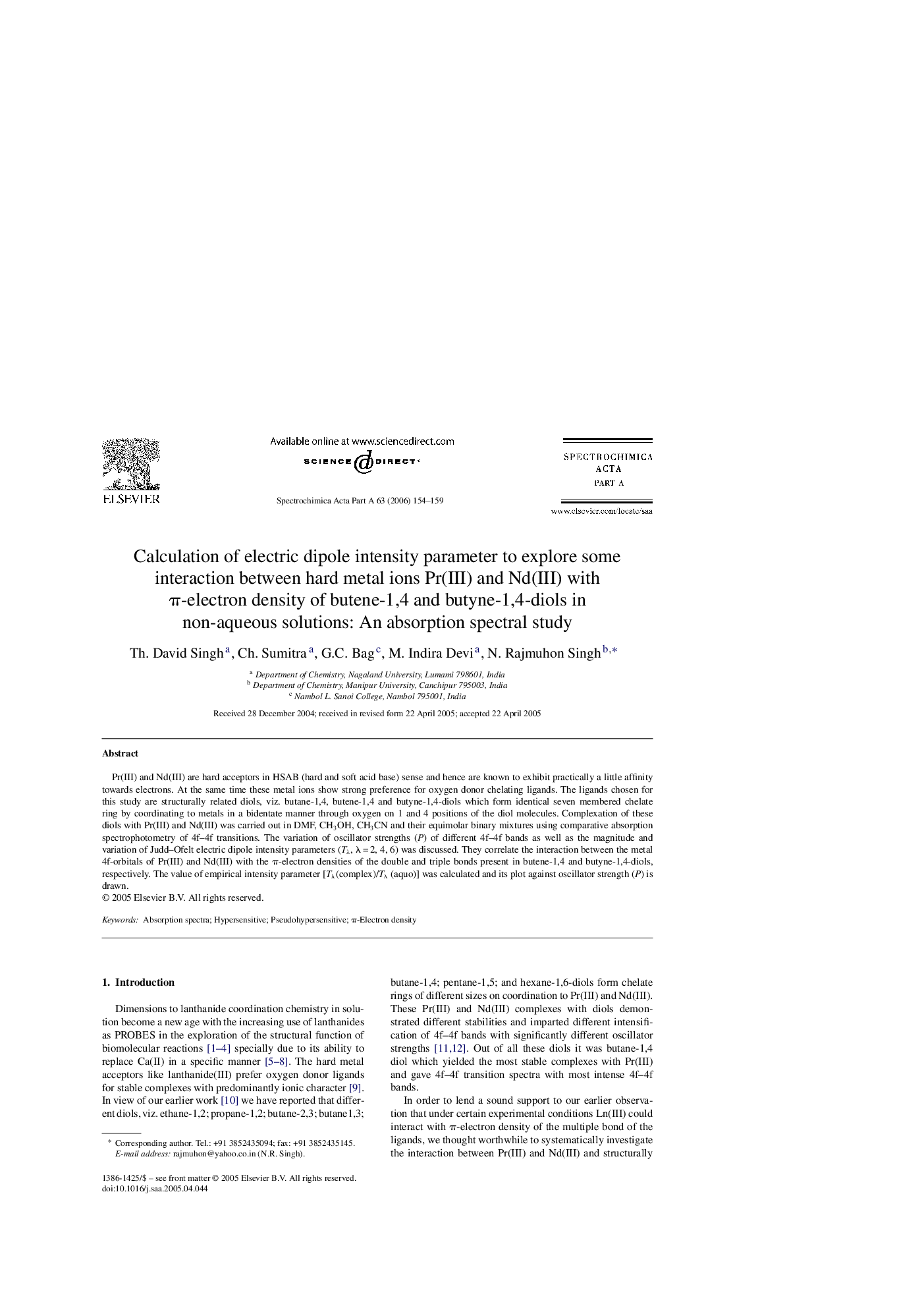| Article ID | Journal | Published Year | Pages | File Type |
|---|---|---|---|---|
| 1236905 | Spectrochimica Acta Part A: Molecular and Biomolecular Spectroscopy | 2006 | 6 Pages |
Abstract
Pr(III) and Nd(III) are hard acceptors in HSAB (hard and soft acid base) sense and hence are known to exhibit practically a little affinity towards electrons. At the same time these metal ions show strong preference for oxygen donor chelating ligands. The ligands chosen for this study are structurally related diols, viz. butane-1,4, butene-1,4 and butyne-1,4-diols which form identical seven membered chelate ring by coordinating to metals in a bidentate manner through oxygen on 1 and 4 positions of the diol molecules. Complexation of these diols with Pr(III) and Nd(III) was carried out in DMF, CH3OH, CH3CN and their equimolar binary mixtures using comparative absorption spectrophotometry of 4f-4f transitions. The variation of oscillator strengths (P) of different 4f-4f bands as well as the magnitude and variation of Judd-Ofelt electric dipole intensity parameters (Tλ, λ = 2, 4, 6) was discussed. They correlate the interaction between the metal 4f-orbitals of Pr(III) and Nd(III) with the Ï-electron densities of the double and triple bonds present in butene-1,4 and butyne-1,4-diols, respectively. The value of empirical intensity parameter [Tλ(complex)/Tλ (aquo)] was calculated and its plot against oscillator strength (P) is drawn.
Related Topics
Physical Sciences and Engineering
Chemistry
Analytical Chemistry
Authors
Th. David Singh, Ch. Sumitra, G.C. Bag, M. Indira Devi, N. Rajmuhon Singh,
